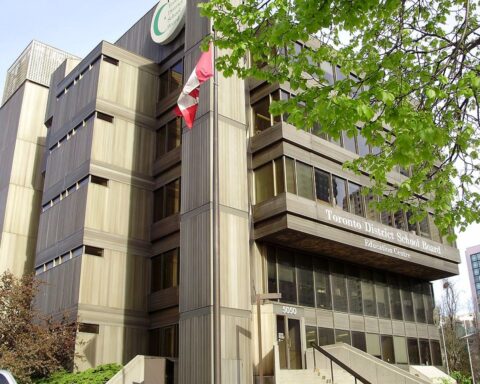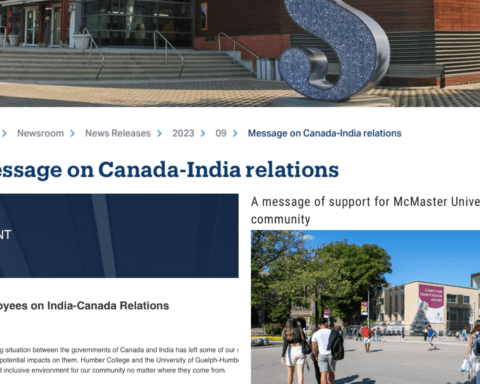A new book on multiculturalism provides an in-depth snapshot of where we are now as a country, while also looking in the rear-view mirror to trace the path we have travelled.
Multiculturalism in Canada: Evidence and Anecdote by Andrew Griffith is up to date as of July this year, and, as the book’s title implies, it provides statistical evidence to back up the author’s observations.
Griffith’s chapter titles reflect some of his findings.
“British Columbia: Or Should it be Asian Columbia?”
“Alberta: The New Face of Diversity.”
“Saskatchewan: Steady Growth.”
“Manitoba: Quiet Success.”
“Ontario: Multiculturalism at Work.”
“Quebec: Impact of a Complex Identity.”
“Atlantic Canada: Immigrants Wanted, but Will They Come and Stay?”
“The North: Aboriginal Nations and New Canadians.”
Is Canadian multiculturalism still the envy of the world? You bet, says Griffith—with caveats about some regressive legislation from the current federal government.
The book has more than 200 charts and tables that illustrate the changing nature of Canadian diversity, right down to the provincial and municipal levels.
Some of Griffith’s conclusions verify what we have observed anecdotally, and others are facts that many may have not realized now reflect the Canadian reality.
Multiculturalism is dead? Not so fast
Multiculturalism is alive and well in Canada, and Griffith tells you why, in very clear and understandable language, backed up by considerable statistical evidence.
Multiculturalism remains iconic, regularly identified by Canadians as one of the top 10 on a list of accomplishments that makes one proud to be Canadian.
“Moreover,” Griffith writes, “Canadians overwhelmingly view themselves as welcoming of minority groups and believe that Canada’s diversity is a strength. But Canadians clearly view multiculturalism in an integrative sense, with an expectation that new arrivals will adopt Canadian values and attitudes.”
Is Canadian multiculturalism still the envy of the world? You bet, says Griffith—with caveats about some regressive legislation from the current federal government. He cites the 2014 Citizenship Act’s “harder to get and easier to lose” provisions that tighten citizenship requirements, with the result that Canada could become less competitive in attracting immigrants.
Forget “MTV.” The top three cities attracting immigrants are no longer Montreal, Toronto and Vancouver, but “TVC” – Toronto, Vancouver and Calgary.
Griffithpoints out the uniqueness of Canadian multiculturalism, noting, “There are limits to what we can learn from the experience of countries – particularly European ones – with different histories, political dynamics and policies.” For example, he notes there is no Canadian political party opposed to immigration. Europe has a few.
Today’s multiculturalism: intriguing facts and figures
Here are some interesting observations Griffin makes that even those of us who are immersed in the topic on a daily basis may have missed.
Forget “MTV.” The top three cities attracting immigrants are no longer Montreal, Toronto and Vancouver, but “TVC” – Toronto, Vancouver and Calgary. Griffith shows that immigration rates in Quebec and the Maritimes are in relative decline, and growth will be in Ontario and the western provinces.
Canada has a workforce of close to 15 million, and close to three million are visible minorities, showing the recent trend of countries such as China, India and the Philippines in the top tier of source countries.
The road to citizenship is in decline, and legislation and under-funding by the current federal government is not helping. Citing again the Citizenship Act of 2014, he argues “the net effect of these changes will be a further reduction in the naturalization rate, already in decline, given that they fall disproportionately on the less educated, and a number of visible minority groups, making it harder for members of these communities to become full Canadians with political rights. This results in a larger disenfranchised population.”
On education: “Educational outcomes at the post-secondary level for most visible minority groups are significantly stronger than they are for those who are not visible minorities. In most groups, the difference in education level between men and women is minor. Canada continues to do a good job of integrating new Canadians in primary and secondary education.”
He notes that, whether you look at ethnic origin, visible minorities, or religion, more recent communities tend to be well-educated, reflecting the current market demand for skilled workers. In all cases, these groups are better-educated than non-visible minorities and, in many cases, those of European ethnic origin.
I encourage anyone involved in citizenship, multiculturalism, immigration and integration issues to read this book to keep current with the latest available information, and perhaps alter some perceptions.
Perceived discrimination remains an issue, as do reported hate crimes. Griffith says visible and religious minorities, particularly those who are first-generation immigrants, have significantly poorer economic outcomes than other ethnic communities and the “mainstream.” Second-generation outcomes show smaller gaps, especially for women and university-educated men and women.
The verdict
Griffith has the credentials for writing a comprehensive book of this nature. The author of Policy Arrogance or Innocent Bias: Resetting Citizenship and Multiculturalism, he is the former director general for citizenship and multiculturalism at Citizenship and Immigration Canada.
As someone leading an organization that is active in integration issues, I encourage anyone involved in citizenship, multiculturalism, immigration and integration issues to read this book to keep current with the latest available information, and perhaps alter some perceptions.
The only complaint I have about the depth of research is that it left out my corner of Canada – northern Ontario – and lumped it in with southern Ontario.
But I know why: it’s because, as Griffith notes, the National Household Survey of 2011 left a lot of gaps when it attempted to drill down to smaller census areas. He strengthens the argument for the return of the long-form census.
The evidence Griffith uses in the book is irrefutable, combining the best currently available data from Statistics Canada, employment equity, Citizenship and Immigration Canada operational statistics, and more to draw his conclusions.
As Griffith says, “My hope is that the evidence highlighted in this book will contribute to creating a more informed discourse as Canada – by most measures a remarkably successful, diverse and multicultural society – prepares for its 150th anniversary.”
Multiculturalism in Canada is an e-book modestly priced to reach a wide audience – and it deserves one.
Don Curry is the Executive Director of the North Bay & District Multicultural Centre, Co-Chair of the North Bay Newcomer Network Local Immigration Partnership Initiative, Timmins Local Immigration Partnership and northern region board member for OCASI. He is also a board member of Pathways to Prosperity, a national immigration research organization.
Don Curry is the President of Curry Consulting, which provides immigration solutions for rural and northern Canadian municipalities, and an NCM director (2022 - 23). He is also the Founding Executive Director of The North Bay & District Multicultural Centre, a multi-award winning immigrant settlement agency with offices in North Bay and Timmins. It is the lead agency for the Local Immigration Partnership project, the North Bay Newcomer Network and the Timmins Local Immigration Partnership.





